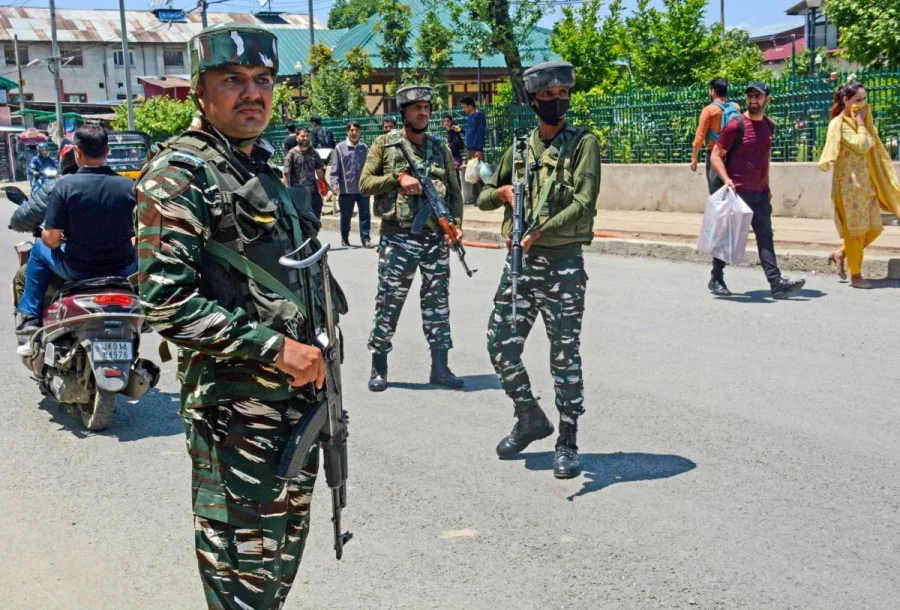I first went to Kashmir in 1987, as a college student. Despite living just a short flight away from Srinagar, I have not returned in all these years. It wasn’t even a discussion in our family, we just avoided it. But we decided to go this summer – if you have been planning travel in Kashmir you should know that it is a safe zone for tourists.
Kashmiris are a warm, hospitable people with genuine heart. They will wait for visitors and then spoil and pamper you when you get there. Spending your tourist INRs in Kashmir can only be supportive of people who have lived through conflict and deprivation for decades.
You inevitably feel like watching the film after reading the book: After returning from our week-long trip to the Valley, my son and I watched the film Haider once again. Vishal Bharadwaj’s take on Shakespeare’s Hamlet, placed in the Valley in the mid-’90s, is an authentic portrayal of what Kashmiris have endured and still do in some ways.Facebook is silencing the voice Of Kashmiris – Islamabad Post
The graphic novel Munnu by Malik Sajad, Arundhati Roy’s Ministry of Utmost Happiness and Madhuri Vijay’s The Far Field are among the truly moving narratives of the agony of Kashmir. But when you see and hear everything for yourself you are left infinitely more shaken.
Kashmir is hurting still. People who have nothing to do with politics, leave alone nursing thoughts of a revolution or azaadi, are traumatised in a way that you and I will not even begin to comprehend. Middle and upper middle-class families, local workers and labourers, people who run small businesses and those who struggle to feed themselves a decent meal are all left damaged.
Look around and the majestic panoramic views are framed by barbed wires and Army trucks everywhere. Traffic is held up frequently within the city or on the highway by passing convoys: 30 or 40 trucks barrelling down the road to some destination under perceived threat, while pedestrians and those stuck in a jam watch in resignation.
Most of us are aware that Kashmir is amongst the most militarised zones in the world, but as tourists we witnessed the impact of this on ordinary people: in their own home, they are asked to prove their identities every few hours. Kashmiris – not any of us – need to produce their papers and explain to relative outsiders what business they have stepped out for that day or hour.
For the people of this land of exquisite beauty, unfreedom is the default state. Freedom for them is not Azaad Kashmir or even the P-word, it is the ability to go about their own lives and businesses without constantly being asked a bunch of questions. It seems, somehow, a different country from the rest of India.
Many Indians who habitually misbehave with working-class people in their own environments do exactly that when they are travelling. There were multiple occasions during our trip when we noticed a khata-pita North Indian man abusing the daylights out of a local guide or horseman. These visitors obviously lack self-awareness and empathy, that the people they are unleashing themselves on have only seen conflict and oppression.
Kashmir abounds with sagas of injustice: by-standers being pushed into a van and never return-ing, innocent people being thrown in jail, women being molested and raped, children being terrorised. Tyranny and coercion is a reality for most marginalised people in the rest of India. In Kashmir, it is even worse.
Article 370 of the Constitution, which accorded special status to the former state, has been revoked, tourists have returned to the Valley, so has the internet, even though it remains patchy. But ordinary people still do not have it easy.
One evening when we were on the boulevard next to the Dal Lake, we found a local teenager suddenly being targetted. The boy was selling ice cream, but it was after sundown and time for hawkers to go. He was being asked to leave by burly armed men, and the whole thing quickly turned into organised bullying. Half a dozen middle-aged men in uniform had rounded him up. The young chap probably wanted to sell a few more ice creams to tourists making merry on the boulevard, but these men were adamant.
They started abusing and pushing him, ordering him to get off the pavement. The teenager tried to reason with them, to allow him to carry on for some more time, but threw up his hands ultimately: “Okay, okay. I’ll leave.” But no, the men in uniform could not wait for him. They physically picked up his cart and pushed it off the high pavement. The boy tried to steady his cart while trying to avoid being hurt by it. The entire pavement was watching him being humiliated.
The feeling of betrayal among the Kashmiris has been a reality since Jawaharlal Nehru’s promise of a plebiscite 75 years ago. The agony, rancour and sense of suspicion about successive administrations have not gone away among ordinary people. Nobody mentions sarhad paar, or across the border, anymore like they did in the film Haider – everyone is well aware that Pakistan isn’t a land of milk and honey. Ordinary people just want relief from oppression on an everyday basis.
In Pahalgam, we saw another boy, much younger, selling socks on the pavement where hundreds of tourists milled about shopping. Waiting for our driver to arrive, we noticed another uniformed man next to the socks cart. He was quietly asking the little boy for freebies. This time, the boy turned his face away, but the look in his eyes was difficult to miss. There was rage and nafrat burning in him. How will he forget or forgive?










